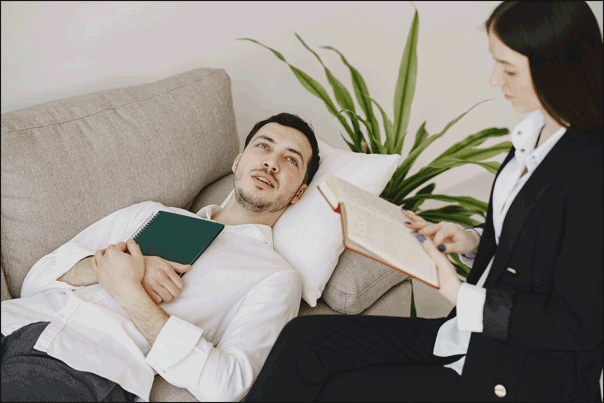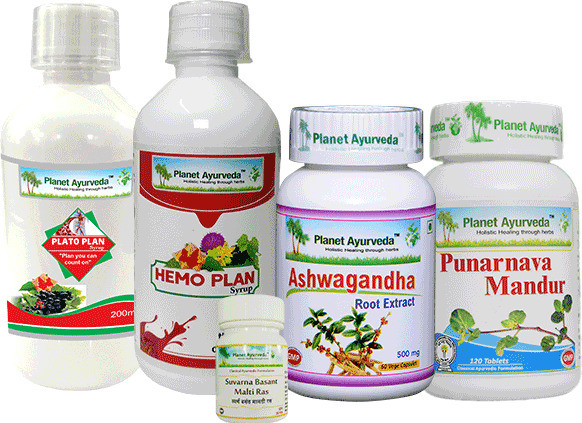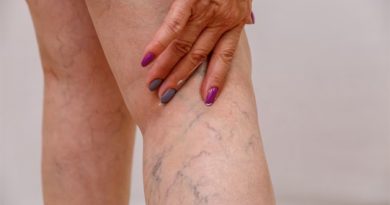Ayurvedic Perspective of Glanzmann Thrombasthenia ( Platelet Disorders)
ABSTRACT
In this article we will discuss a very rare disorder known as glanzmann thrombasthenia. It is a disorder associated with platelets functioning. In today’s era such types of disorders have become very prevalent and popular. In the modern system of medicine complete cure of such illness is not possible as they use platelets transfusion technique to treat this kind of ailment. But after sometime many patients complained that their platelet count again got reduced. Ayurveda offers numerous magical herbs that work quite efficiently in increasing the platelets count in a healthy way. It also teaches us about the principles of dinacharya (daily regime) and ritucharya (means seasonal regime). So let’s start discussing it in detail.
INTRODUCTION
Glanzmann thrombasthenia is an abnormality or disorder associated with platelets. Platelets also known as thrombocytes are a type of blood cells and form a major composition of blood. Their main function is to release coagulation factors to stop bleeding from injured blood vessels by forming a clump (clot). The two major functions of platelets are formation of blood clots and to prevent bleeding.
What is glanzmann thrombasthenia?
It is a rare bleeding disorder that occurs due to abnormality in platelets functioning. In this platelet contains extremely low level or defective levels of glycoprotein, it is a main receptor for fibrinogen. Due to that production of fibrinogen also becomes defective, and that leads to no fibrinogen attachment of one platelet to another platelet resulting in an increase in bleeding time as it takes longer time to coagulate (form a clot) to prevent blood loss.

Ayurvedic correlation of glanzmann thrombasthenia
According to our ancient classical text we can correlate it with “rakta pitta” (haemorrhagic disorders). It is a disorder of “rakta” (blood). Pitta dosha has its seat in blood, so if pitta dosha gets vitiated then it will lead to formation of an ailment in blood also. Pitta is also known as ‘lohitpitta’ because it contacts with blood, affects it leading to generation of a malady.
Rakta pitta is of three types
- Urdhva rakta pitta– bleeding from upper openings of the bodies, such as in nose bleed. In this there is an involvement of kapha dosha.
- Adhog raktapitta– oozing of blood from the lower body tract, as in hematuria. In this there is an involvement of vata dosha.
- Triyak raktapitta– in this type there is a haemorrhage from different parts of the body such as in the limbs. In this vitiation, vata-kapha doshas is present.
ETIOLOGICAL FACTORS
These are the main causes (nidan as per ayurveda) that results in formation of an ailment.
- Generally the cause is idiopathic but it is believed to occurs due to :
- Hereditary – It is believed to be an autosomal recessive disorder so family inheritance plays a major role in this.
- Autoimmunity.
- Sepsis
- Vitamin b12 & folic acid deficiency.
- Leukemia & other malignant growth.
As per ayurveda the main cause of rakta pitta are as follow:
- Consumption of katu (spicy), amala (sour), lavana (salty) rasa in abundant quantity.
- Excessive intake of Ushana (hot) and teekshna (penetrating) dravya (herbs)
- Excess anger.
- Overeating
- Viruddha ahara sewana (Intake of unhygienic diet)
- Vega dharna (Controlling of natural urges of urine and stool)
- Over use of alkalis (kshara) products.
PATHOGENESIS OF RAKTA PITTA
Pathogenesis explains the complete process behind the formation of a disease.

This verse states that
When a person does use the above mentioned causes, it leads to aggravation of pitta dosha & joins blood, causing vitiation of blood channels. Due to heat of pitta, the liquid portion of all dhatus (important organs) oozes out which leads to bleeding of blood from all the openings of the body including hair follicles as seen in ITP & thrombocytopenia.
PRODROMAL SYMPTOMS IN RAKTAPITTA
They are the complaints that a patient feels before the appearance of signs & symptoms in the body. They are known as “purvrupa” as per the ayurveda. The below listed verse states that there is presence of certain features and it includes

- Sadan (fatigue)
- Sheetkamitvan (desire to eat cold food items)
- Kanth dhumaynam (feeling of fumes coming out from throat)
- Vaman( vomiting)
- Loha gandhi nishwas (iron smell in breath)
CLINICAL FEATURES
It includes the signs and symptoms. It means the general complaints along with patients present in front of the physician.
- Easy bruising over the body.
- In Some cases nosebleeds are seen.
- Fatigue
- Body ache
- Generalized weakness.
- Gum bleeding.
- Gastrointestinal bleeding.
- Burning sensation in the body.
- Anorexia- loss of hunger
- Polydipsia- increased thirst.
DIAGNOSIS
It means how we can identify the disease. There are various methods
- General physical examination of patients by using inspection, palpation, auscultation and percussion technique.
- Proper history taking.
- Laboratory findings: it includes:
- Complete blood count test.
- Bone marrow examination.
- By ruling out past history of the autoimmune disease like rheumatoid arthritis, psoriasis etc.
According to Ayurveda – The two most preferred diagnostic procedures used by a physician are as follow
1.Trividh pariksha (Group of 3 diagnostic procedures)
- Darsha- Diagnosis is made by visual examination of the symptoms.
- Sparshan- Physician uses tactile examination to evaluate whether skin is cold/hot
- Prashan– Physicians ask direct questions from the patient, to evaluate the root cause of the disease i.e. history taking.
2. Asthavidh pariksha(set of 8 examination procedure)
- Nadi pariksha– By palpating the pulse rate of the patient.
- Mutra pariksha– By examining the urine of the patient.
- Mal pariksha– By stool examination.
- Jivha pariksha– By examining the tongue whether coated or not.
- Shabad pariksha– By listening to the natural sounds within the body like intestinal sound (peristalsis) sounds of moving body fluids.
- Sparsh pariksha– By observing the patient skin texture whether it is cool, wet or dry.
- Drik pariksha– When a physician inspects patient symptoms through his/her eyes.
- Akriti pariksha– When a physician evaluates the general appearance of a patient whether he/she looks dull, lethargic or fatigued etc
MANAGEMENT
Symptomatic Treatment
- Iron and folate supplementation is given to combat anemia, as in this ailment due to excessive bleeding patients generally suffer from low blood count.
- In case of gum bleeding- astringent medications are given to control it.
- In heavy menstrual bleeding- hormonal therapy is given.
- In case of heavy bleeding- platelets transfusion is advised.
So as these above mentioned treatment modality just provide symptomatic relief to the patient, ayurveda works very generously by going into the rot level of cause.
As per ayurveda
The main line of treatment we need to follow to treat raktapitta is as follow:
- A person who is not emaciated and weak, eats food in normal proportion, in such patient’s do not try to control the bleeding, as the blood which is oozing out is vitiated blood, contains various impurities in it. So do not try to do stambhan (stop) of such blood.
- Mostly the raktapitta got excited by ‘ama dosha’ of the person aggravates, hence it should be managed by using ‘langhan’ (lightening measures)
- In case of urdhva raktapitta there is involvement of kapha dosha and occurs due to the use of snigdha (soft) food products, so in this ‘langhan’ (lightening measures) are used.
- Whereas in adhog raktapitta due to involvement of vata dosha, as it possesses ruksha (rough) property so we will use “tarpan” and “breehan” (nourishment measures).
1. SANSHODHAN CHIKITSA (detoxification procedure)
- Sanehan- Smoothing the body dosha’s by using herbal ghrit/oil.
- Svedan– Semi-hot medicated kwath is sprayed on the patient’s body by a specially made swedan yantra (instrument).
- Vaman (emesis)- emetic medicines are given to the patient to take out the vitiated dosha of the body.
- Virechana (purgation) is the best technique to release out the pitta dosha from the body by anal route.
- Raktamokshan (bloodletting)-It is considered as “ardh chikitsa” (important as a whole treatment) by acharya shushruta because it helps in purifying the blood by removing harmful toxins from it.
2. SANSHAMAN CHIKITSA
In our ancient classical text the following medications should be used:
1. Rasa/bhasma/pishti
- Rakta pittantak rasa
- Shankh bhasma
- Praval bhasma
- Praval panchamrit
Dosage: 125-250 mg with honey/water.
2. Churna
- Laksha churna
- Ushiradi churna
- Aatrushakadi churna
Dosage: 3-6 grams with plain water.
3. Kwath/asav
- Aatrushakadi kwath
- Padmakadi kwath
- Lodhrasava
- Ushirasava
Dosage: 20-30 ml with plain water after meals.
Beside these, you can also use the herbal remedies of planet ayurveda, it is a leading herbal manufacturing unit who are serving people worldwide with their ayurveda experts. They offers various herbal formulations that will work very efficaciously in glanzmann thrombasthenia, it includes
ITP level -1 (basic pack) – This pack contains five herbal formulations such as:
- Plato plan syrup
- Punarnava mandur
- Hemo plan syrup
- Ashwagandha capsule
- Savran basant malti rasa

1. Plato plan syrup
This herbal formulation contains herbs such as eranda karkati (Carica papaya), giloy (tinospora cordifolia), ashwagandha (Withania somnifera), amalaki (Embilica officinalis), draksha (Vitis vinifera) etc. All the herbs present in this are enriched with immuno modulatory action, thus assisting in elevation of the immunity power of the body. It also helps in raising the platelet count due to its integral properties.
Dosage: 2 teaspoons twice daily.
2. Punarnava mandur
This herbal formulation is imbued with plenty of therapeutic actions as it contains punarnava (Boerhaavia diffusa) which is very effective in increasing the digestive power of the body. Other herbs present in the formulations such as pipali (piper longum), sunthi (zingiber officinale), haridra (curcuma longa) etc contain anti-inflammatory antifungal properties so it helps in healthy wound healing in patients of glanzmann thrombasthenia
Dosage: 2 tablets twice daily with plain water.
3. Hemo plan syrup
This herbal syrup contains manjistha (Rubia cordifolia), shatavari (Asparagus racemosus), gorakhmundi (Sphaeranthus indicus) etc.All these herbs are natural blood purifiers and assist in increasing the haemoglobin content as the patient of glanzmann thrombasthenia generally suffers from anemia as well.
Dosage: 2 spoons twice daily with plain water.
4. Ashwagandha capsule
It contains great antioxidant properties that boost up the immune system and develop strong immunity power to combat diseases like arachnoiditis very well. It contains pure and standardized extract of ashwagandha (Withania somnifera). This herb helps in providing strength to the body as patients of glanzmann thrombasthenia usually suffer from generalized body weakness as well.
Dosage: 1 capsule twice daily with plain water after meals.
5. Suvran basant malti rasa
This herbomineral formulation contains properties like anti-inflammatory (reduce inflammation). It helps in boosting up the immunity of our body by balancing tridosha. It also possesses “rasayan” property that rejuvenates the body channels and helps in lengthening the lifespan of glanzmann thrombasthenia patients. It contains marich (Piper nigrum), kharpara bhasma (calamine in an incinerated form), shuddha hingula (cinnabar in a purified form), swarna bhasma (gold in an incinerated form) etc.
DOSAGE-1 tablet twice daily with plain water after meal
Contact my assistant to provide you the costing/ordering and delivery information at – costing.planetayurveda@gmail.com or call at +91-172-5214030 Or Check Website – www.PlanetAyurveda.com
CONCLUSION
Now we can conclude that ayurveda offers various herbal medicines that work very efficiently in managing conditions like glanzmann thrombasthenia. Planet ayurveda experts are serving people with their holistic approach of healing so you can also visit us at our clinic located at Mohali, Punjab or you can also send your queries on our official email-id herbalremedies123@yahoo.com.






